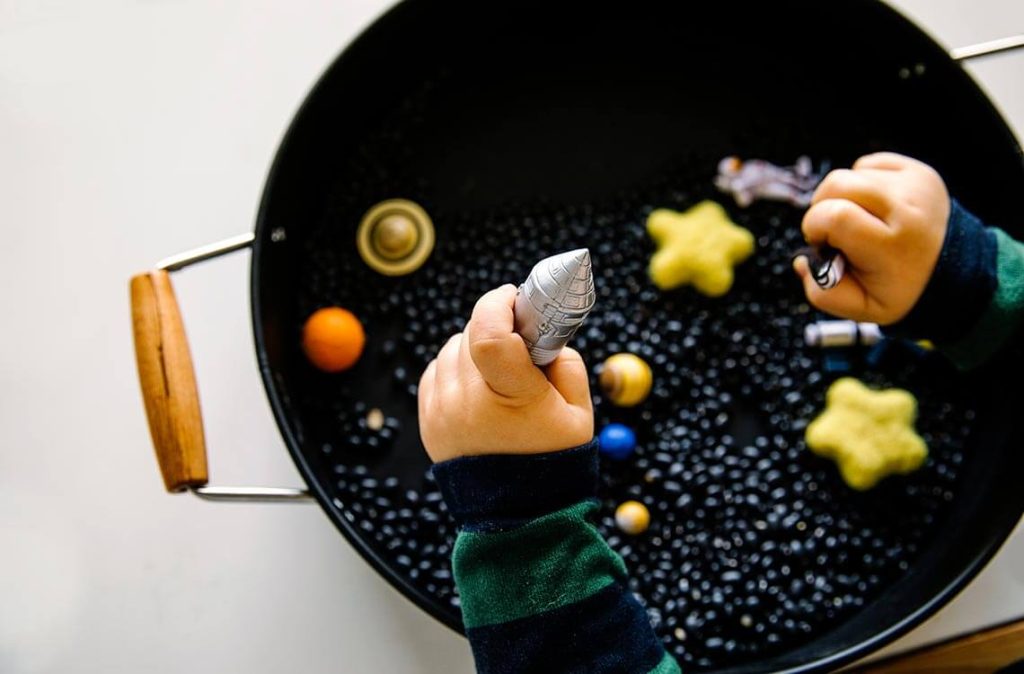Sensory play has become one of the most effective tools in helping autistic children in recent years.
They offer a new way for these special kids to explore and learn more about the world around them despite the inherent challenges that come with having this disorder.
In case you didn’t know, autism or Autism Spectrum Disorder (ASD) is a developmental disorder that affects everything from communication to social interaction to behaviour.
Children with autism often struggle with sensory processing. A disability that can make certain activities overwhelming or uncomfortable.
But there are still many ways that ASD children can learn, experience and participate in the world around them. These activities are known collectively as ‘sensory play’.
What is Sensory Play
Sensory play refer to special activities that can help children with autism understand their environment in a safe, productive manner.
By exploring different textures, smells, tastes, and sounds in a controlled setting, autism children can learn new things quickly and efficiently. Without succumbing to meltdowns or tantrums.
These activities can provide a variety of benefits.
They include improved sensory processing, increased communication and socialisation, reduced anxiety, and improved stress levels.
If you have an autistic child, here are some sensory play activities you can do with them at home to help them cope with their unique way of seeing the world.
8 Types of Sensory Play Activities
Sensory Bins
Sensory bins are containers with different materials that children can touch and manipulate.
Some common materials used in sensory bins include rice, sand, water beads, and dried beans.
You can customise sensory bins to your child’s specific sensory needs.
For example, if a child is hypo-sensitive to touch, you can fill a sensory bin with rough materials such as sandpaper or bumpy balls.
If a child is hyper-sensitive to touch, a sensory bin that contains soft materials such as feathers or cotton balls may be more appropriate.
Bubble Wrap
Bubble wrap can be a fun and engaging sensory play activity for children with autism.
The popping sound and tactile sensation of popping the bubbles can be satisfying for some children.
Additionally, using different coloured bubble wrap or adding paint to the bubbles can provide a visual element to the activity.
Bubble wrap can also be a good coping activity during times of stress.
Play-Doh
Play-Doh is a classic sensory play activity that can be beneficial for children with autism.
It provides a tactile experience that can help with sensory processing.
Additionally, playing with Play-Doh can be a calming activity that can reduce stress and anxiety levels.
Autistic children can develop their fine motor skills by making shapes, building structures or even just manipulating the clay with their hands.
Water Play
Water play can be a soothing and calming sensory activity for children with autism.
Playing with water can provide a tactile experience that can help with sensory processing.
Additionally, adding different objects to the water such as rubber ducks or cups can provide a fun and engaging activity.
Sensory Walks
Sensory walks are designed to provide different sensory experiences as children walk along a predetermined path.
These paths can include different textures such as grass, sand, and rocks, as well as different smells and sounds.
These sensory walks can be a fun and engaging way to incorporate sensory play into outdoor activities.
Sensory Bottles
Sensory bottles are clear plastic bottles that you can fill with different materials that provide a visual and tactile sensory experience.
Some common materials used in sensory bottles include glitter, beads, and water.
When used correctly, sensory bottles serve as a calming tool which you can customise to a child’s specific sensory needs.
Sensory Playmats
Sensory play mats are large mats that have imprints of varying textures on them.
Some versions also allow you to fill them with different materials such as rice or sand.
Children can play and explore on the mat, providing a tactile and visual sensory experience.
They can even use them for sensory walks as shown in the picture.
Sensory play mats can be especially beneficial for children who are hypo-sensitive to touch and need extra sensory input.
Sensory Stories
Children love listening to stories.
But for autistic children, sensory stories help them break through their limitations so they can have a better experience.
Sensory stories are a form of storytelling that aims provide a structured sensory experience for individuals with autism.
The stories are typically interactive and involve a range of sensory stimuli, such as sounds, smells, textures, and visuals, which can help individuals with autism to better understand and engage with their environment.
Playing with the Senses
Sensory play offers a wealth of benefits for children with autism.
It helps them become better communicators and calmer observers of their surroundings.
By incorporating a range of sensory experiences into their everyday activities, you can create a fun and engaging environment that promotes learning and development.
With a little creativity and a willingness to experiment, there are endless opportunities for sensory play that can help children with autism to thrive and reach their full potential.
Disclaimer: The information provided in this article is for informational purposes only and should not be considered as medical advice from Motherhood. For any health-related concerns, it is advisable to consult with a qualified healthcare professional or medical practitioner.
For more insightful stories and fun recipes, stay tuned to Motherhood Story!
